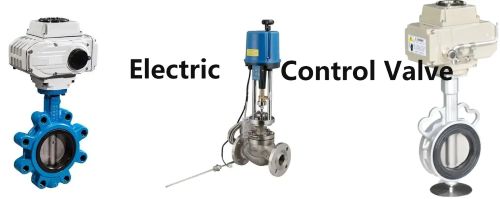


Effective Solutions for Valve Blockages and Failures
Cleaning
During initial commissioning or after major repairs, welding slag, rust, and debris can accumulate in the throttle, guide parts, and balance holes of the lower bonnet. These contaminants often cause scratches on the valve core and guide surfaces or indentations on sealing surfaces, leading to valve failures. To address this, the China Control Valve should be disassembled and thoroughly cleaned to remove all debris. If the sealing surface is damaged, careful grinding is required. Opening the bottom plug allows flushing of any debris trapped in the lower valve cover via the balance hole. The entire pipeline should also be flushed. Before resuming normal operation, fully open fluorine-lined electric control valves to allow medium flow and confirm proper function.
External Flushing
Valves controlling media prone to precipitation or solid particles can experience blockages at the orifice and guide. To resolve this, connect external gas or steam to the bottom plug of the lower valve cover. If blockage or sticking occurs, opening the external gas or steam valve flushes the valve internally without needing to move the fluorine-lined electric regulating valve, maintaining uninterrupted operation.
Install Pipe Filter
Small-caliber fluorine-lined electric control valves with ultra-narrow throttle gaps require clean media free of debris. Installing a filter upstream of the valve ensures smooth flow and prevents blockages. Additionally, when using positioner-equipped valves, a common fault is blockage in the air passage orifice. To prevent this, install an air filter pressure-reducing valve on the air supply line feeding the positioner.
Increase Throttle Gap
Blockages caused by solids or debris can be reduced by increasing the throttle gap. Selecting valves with larger throttle openings or concentrated throttling designs, such as windows or slots, enhances fault elimination. For single- or double-seat valves, switching to a “V”-shaped valve core or a sleeve valve can improve reliability. In chemical plants where double-seat valves frequently jam, prompt replacement with a sleeve valve is an effective solution.
Medium Flushing
Harnessing the energy of the process medium itself can help flush away deposits and blockages, improving anti-blocking performance. Techniques include switching to flow-closed operation, using streamlined valve bodies, and positioning orifices in areas subject to strong scouring. Ensure that throttle materials used in these methods offer enhanced erosion resistance for durability.
Straight-Through to Angle Configuration
Straight flow paths often generate complex S-shaped flows that create dead zones in valve chambers where deposits accumulate. Switching to an angled valve design—similar to a 90-degree elbow—improves scouring efficiency by reducing dead zones and enabling a more streamlined flow. For slight blockages, consider replacing straight-through fluorine-lined electric regulating valves with angled configurations to enhance performance and reduce fouling.Know more about Google SEO Directory
